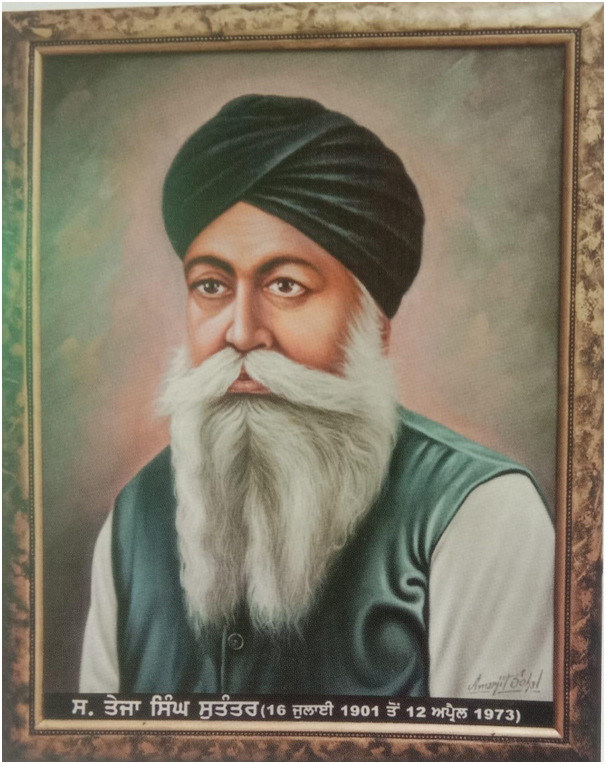Teja Singh Sutantar
Context: Punjab CM unveiled a statue of Teja Singh Sutantar, former Sangrur MP and revolutionary leader, at Nihalgarh village in Sangrur district.
- Born in 1901 as Samund Singh in Aluna village of Gurdaspur district, Teja Singh completed his schooling and joined Khalsa College in Amritsar.
- After the 1919 Jallianwala Bagh massacre, which had stirred patriotic sentiments in Punjabi youth, he joined the Akali Dal to participate in the movement of liberating gurdwaras from degenerate mahants.
- However, in September 1921 , he formed his own squad called ‘sutantar jatha’ (also called as swatantar meaning free/independent).
- In its maiden attempt, the jatha successfully liberated the gurdwara in a village called Teja, in Gurdaspur district, from the mahants. He would soon free another gurdwara, in Othian village, Gurdaspur, from mahants.
Revolutionary Activites at National Level
- In early 1923 , Teja Singh went to Kabul as a Sikh missionary. There he came in contact with a few leaders of the Ghadar Party, who, at the time, were preparing for their second attempt to overthrow the British government.
- The Ghadar Movement was an early 20th century international political movement founded by expatriate Indians to overthrow British rule in India. While it would never see the success it set out for, it would be an inspiration for many freedom fighters opposed to Gandhian ideals of non-violence.
- The Ghadhar leaders persuaded Teja Singh to undergo military training – thus, in 1925, he joined the Turkish military academy under the pseudonym Azad Beg. He would eventually be granted Turkish citizenship and be commissioned into the Turkish army.
- However, Teja Singh later moved to Berlin and then to Canada and the United States, where he addressed congregations of Indians, mainly Punjabi Sikh immigrants. Those who heard him described him as a fiery speaker.
- After visiting several countries and briefly joining a university in Moscow in December 1934 , Teja Singh returned to India and became a prominent leader of communist party (CPI).
- He contributed revolutionary articles to the party journal, the Kirti, frequently writing about issues that plagued peasants. On January 16 ,1936 he was arrested along with other communist leaders for his “seditious” activities.
Post-independence
- Teja Singh, who a prominent leader of the Kisan Sabha, led a number of peasant agitations against the government and landlords.
- He was a key leader in the PEPSU Muzara movement, which started in the 1930s and went on till 1952. The movement was started by landless peasants (muzaras) in PEPSU (Patiala and East Punjab States Union, which included the districts of Mansa, Sangrur, Barnala, and parts of Bathinda, apart from Patiala) to obtain ownership rights of the land they had been tilling for generations.
| Practice Question
1. Explain the contribution of Teja Singh Sutantar in the Indian Freedom Movement? |




